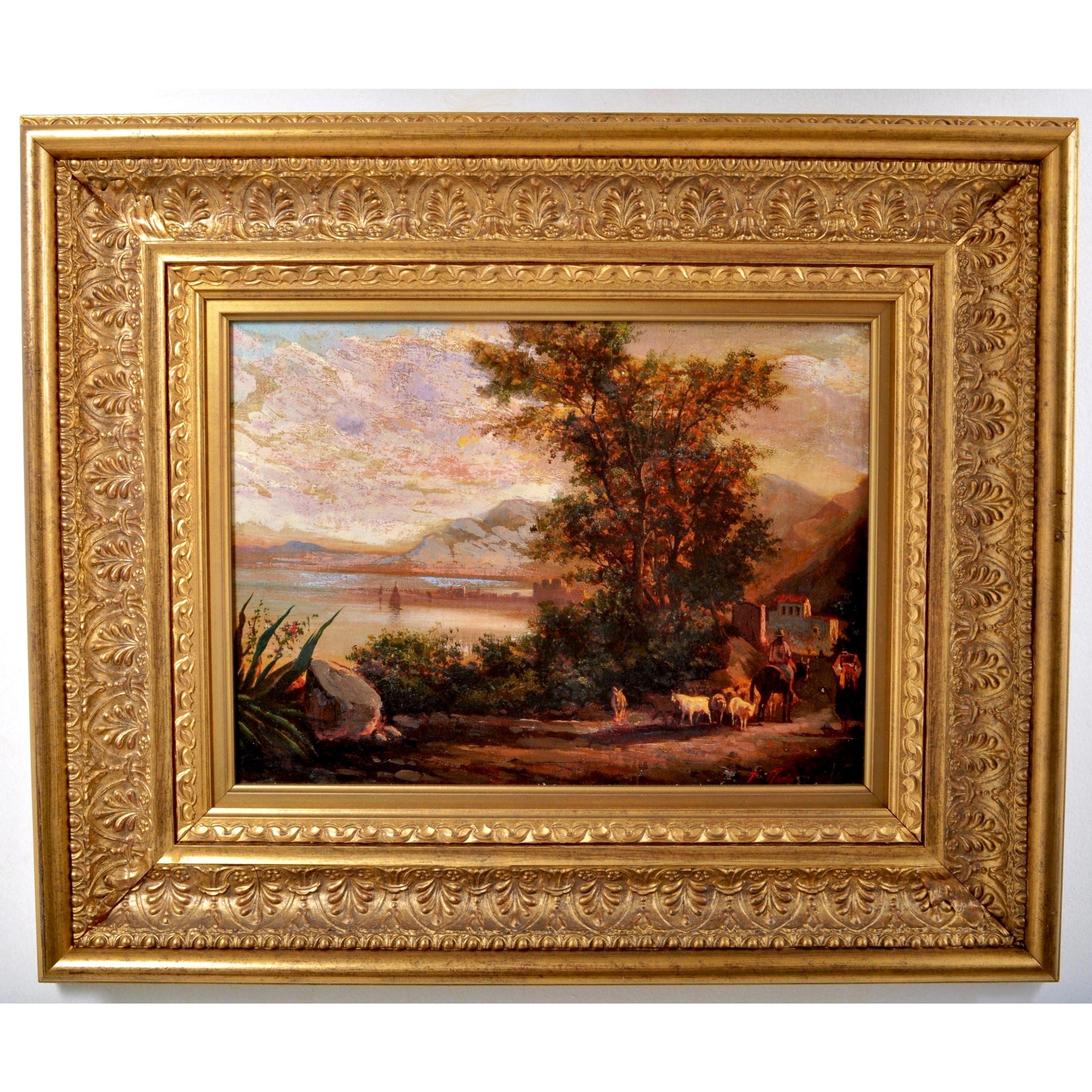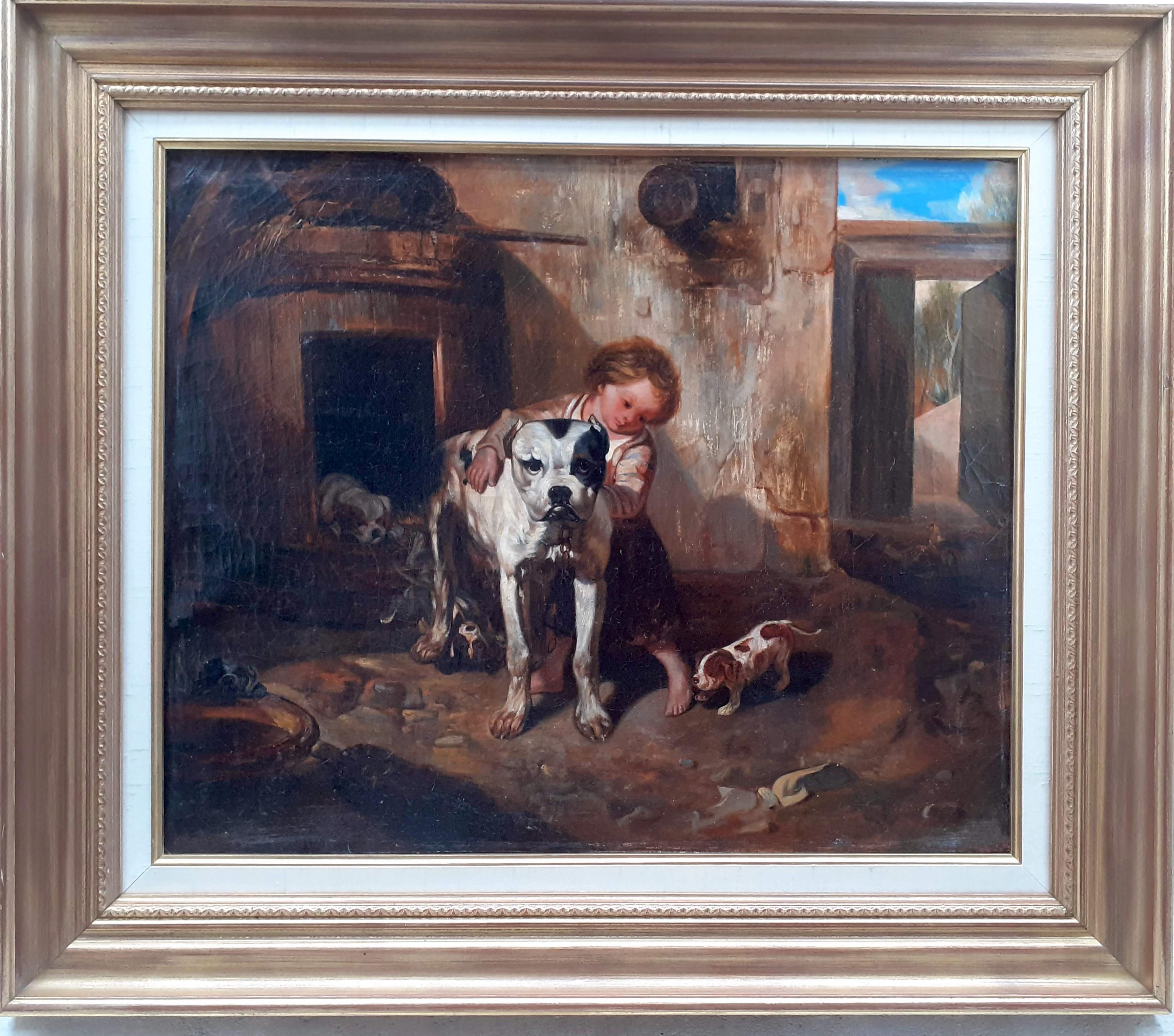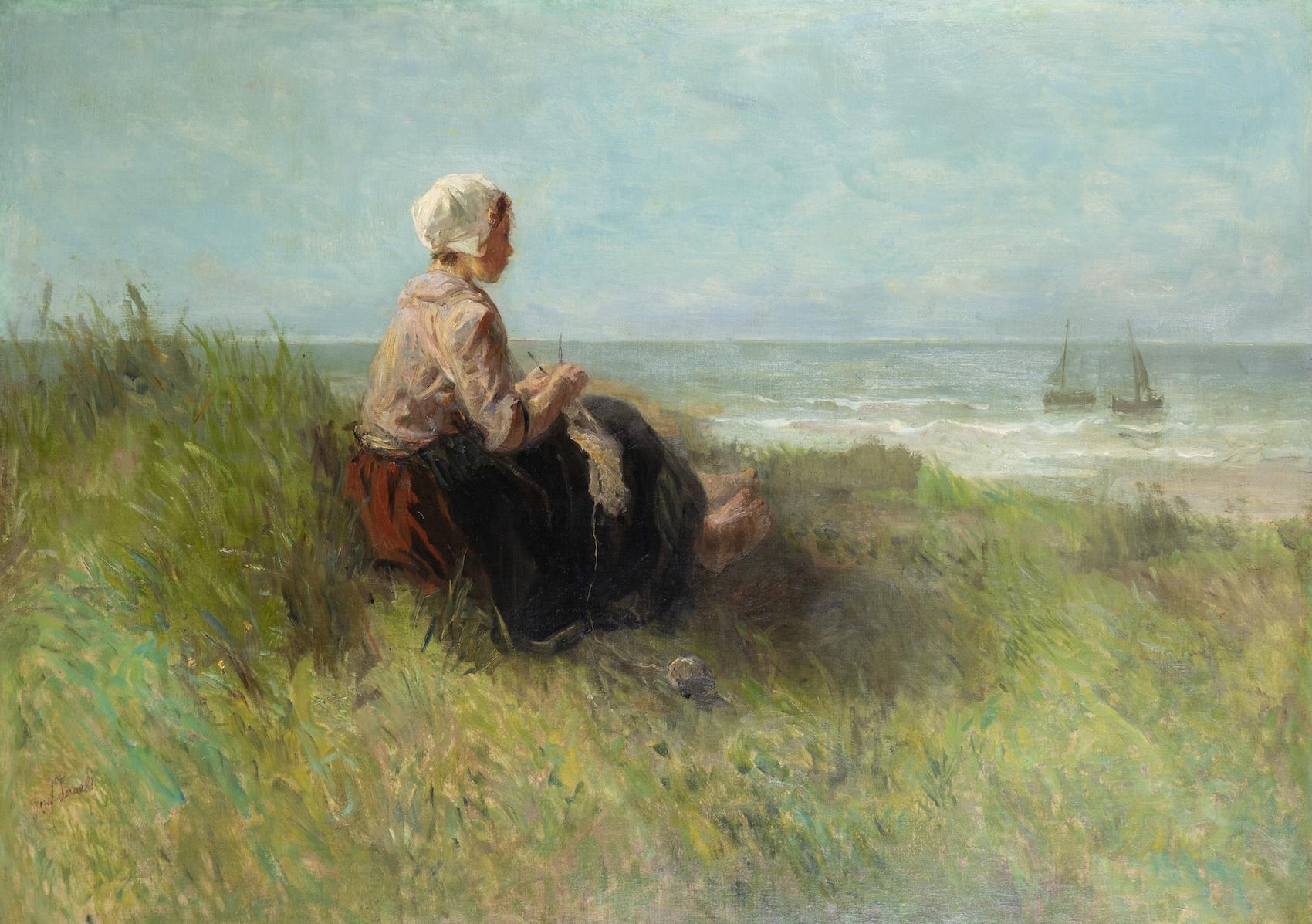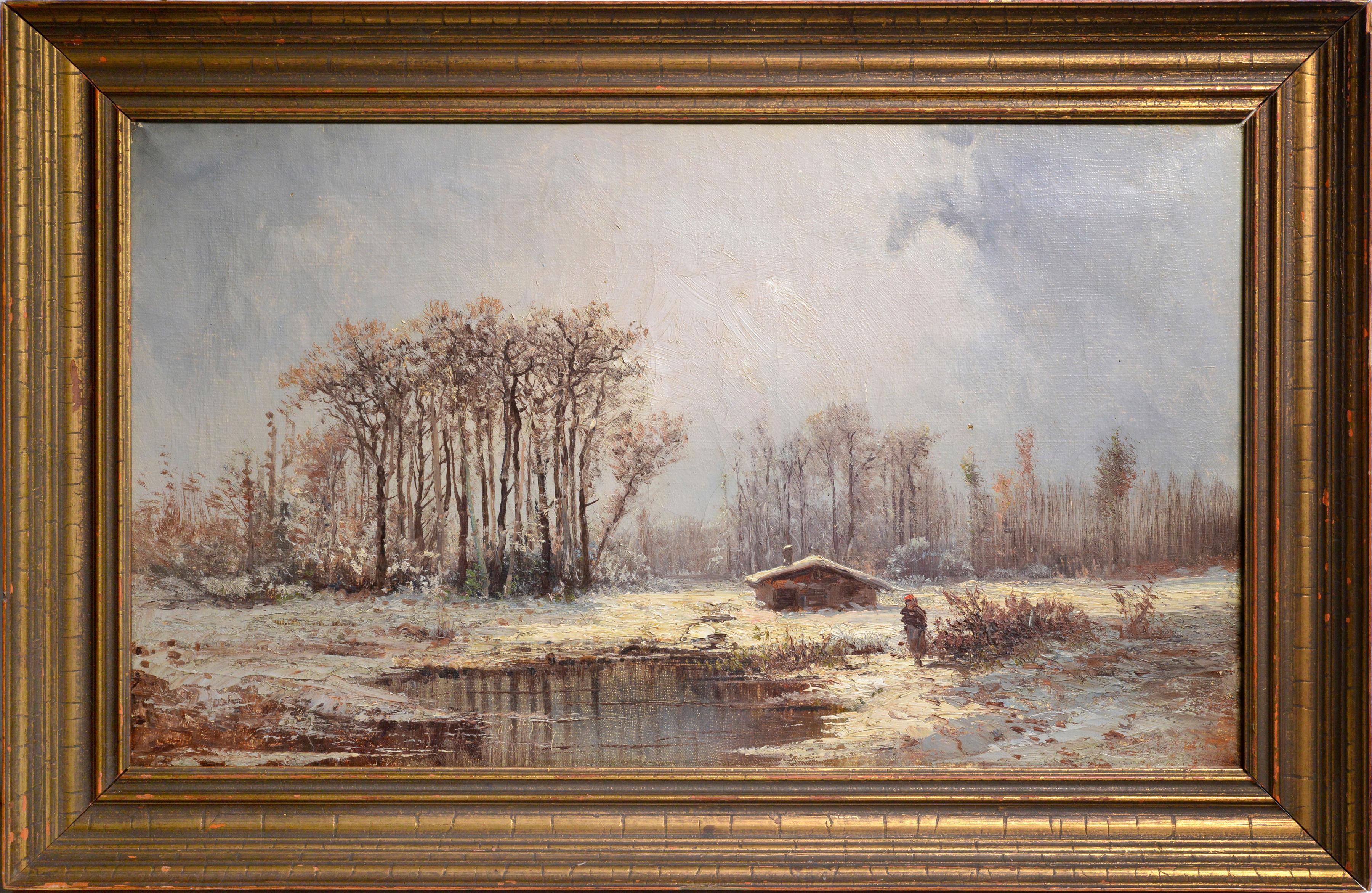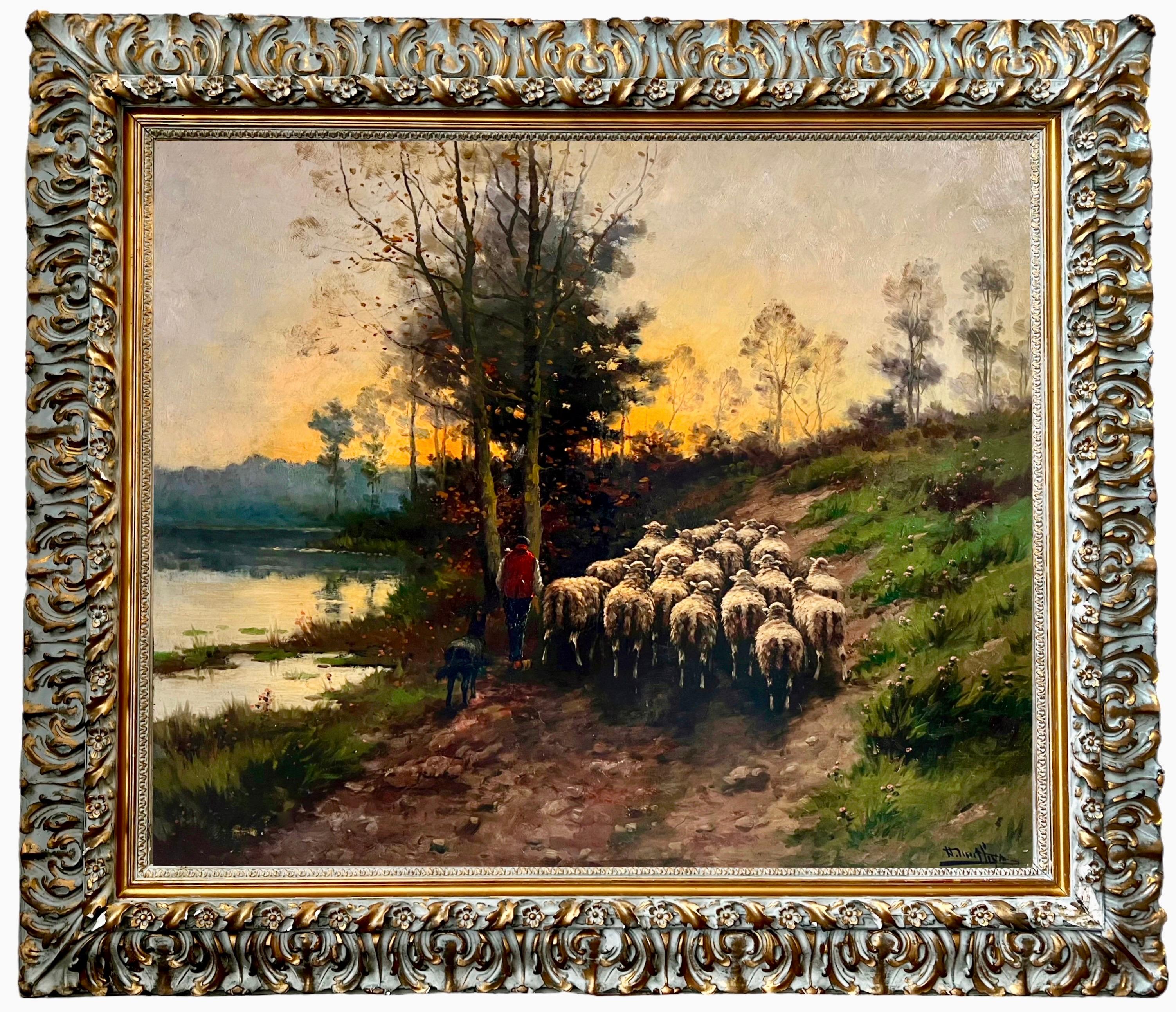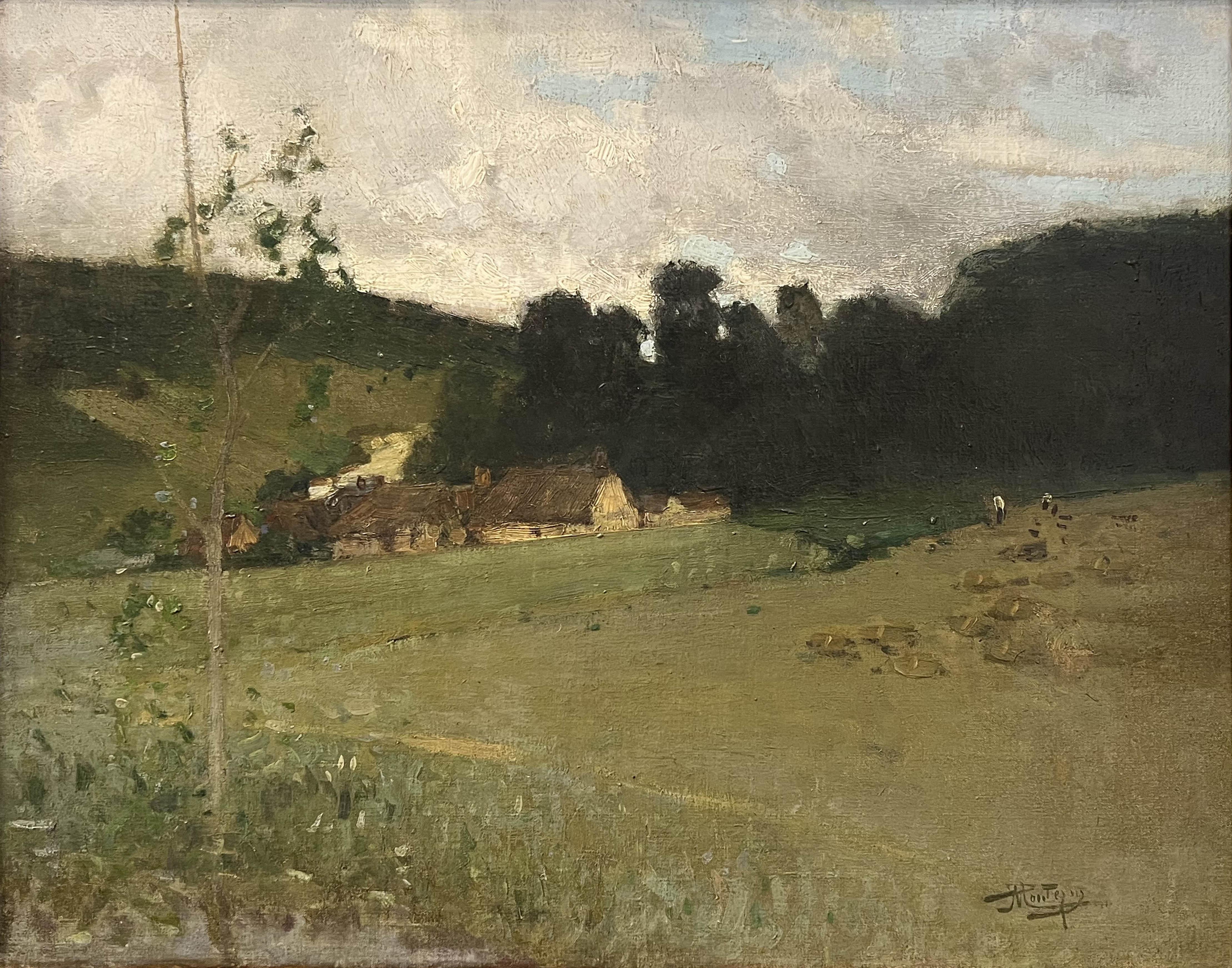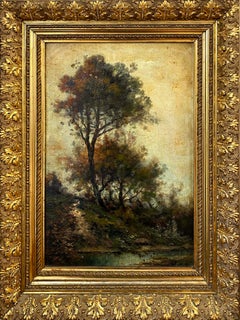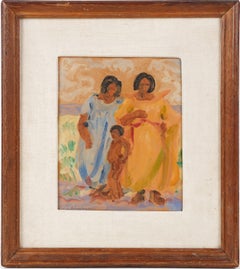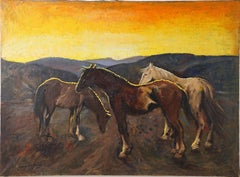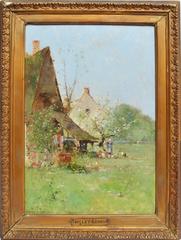
Barbizon Landscape with Chickens
View Similar Items
Want more images or videos?
Request additional images or videos from the seller
1 of 12
Victor Viollet-le-DucBarbizon Landscape with Chickens1875
1875
About the Item
- Creator:Victor Viollet-le-Duc (1848 - 1901, French)
- Creation Year:1875
- Dimensions:Height: 15 in (38.1 cm)Width: 11 in (27.94 cm)Depth: 2 in (5.08 cm)
- Medium:
- Movement & Style:
- Period:
- Condition:
- Gallery Location:Buffalo, NY
- Reference Number:1stDibs: LU13921909803
About the Seller
4.9
Platinum Seller
These expertly vetted sellers are 1stDibs' most experienced sellers and are rated highest by our customers.
Established in 1970
1stDibs seller since 2015
2,383 sales on 1stDibs
Typical response time: 1 hour
More From This SellerView All
- Antique Barbizon School Oil Painting Original Gold Frame Rich Colors FallLocated in Buffalo, NYOriginal Barbizon school painting in an original period frame. Framed 24 x 18 Unframed 18 x 12Category
19th Century Barbizon School Landscape Paintings
MaterialsOil, Canvas
- Antique American School Modernist Landscape Signed Western Oil on PaperLocated in Buffalo, NYSigned illegibly lower left. Oil on paper. 10 x 8.Category
1920s Modern Landscape Paintings
MaterialsOil, Canvas
$596 Sale Price25% Off - Antique American Expressionist Signed Original Sunset Horse Landscape PaintingLocated in Buffalo, NYVintage modernist expressionist sunset oil painting. Oil on canvas. Image size, 27.5L x 20H. Signed.Category
1960s Modern Landscape Paintings
MaterialsOil, Canvas
- "Renaissance Door" Signed Vintage Mid Century Surreal Southwest LandsscapeLocated in Buffalo, NYVintage signed American modernist landscape oil painting. Oil on canvas. Signed verso. Frame available.Category
1980s Surrealist Landscape Paintings
MaterialsCanvas, Oil
- Antique American School Signed Framed Abstract Seascape Oil PaintingLocated in Buffalo, NYAntique American modernist abstract signed oil painting. Oil on canvas. Signed. Framed.Category
1960s Abstract Landscape Paintings
MaterialsOil, Canvas
$556 Sale Price20% Off - Signed Framed Antique American School Signed Abstract Expressionist Oil PaintingLocated in Buffalo, NYAntique American abstract expressionist signed oil painting. Oil on canvas. Signed. Framed. Image size, 26L x 20H.Category
1950s Abstract Landscape Paintings
MaterialsCanvas, Oil
You May Also Like
- 19th century French Barbizon School Painting oil on Canvas Landscape circa 1840Located in Portland, OR19th century French Barbizon School Painting, oil on canvas signed "Marin", Circa 1840. A very attractive bucolic, pastoral landsacpe scene with sheep grazing on the banks of a lake ...Category
Early 19th Century Barbizon School Landscape Paintings
MaterialsOil, Canvas
- Mother dog and her puppies, 19th Century French Barbizonf armhouse paintingLocated in Norwich, GBAn charming 19th century dog painting depicting a mother dogue and her exuberant topsy turvy pups by the farmhouse barns or cowsheds , with a young child given them a fuss! Dating from ca 1860-70, the oil on canvas is unsigned, but bears on the verso a rather special stamp from colour and artists supplies merchant Paul Durand-Ruel (1831-1922). Paul Durand-Ruel is known as the legendary art dealer who launched, almost single handedly, the Impressionist movement. He represented Monet, Pissarro, Sisley, Renoir in his Paris, London and New York Galleries. Like his father Jean Marie Durand, Durand Ruel had started as both a merchant of art supplies, and dealer. Often, these two activities overlapped, as he would supply cash strapped artists who left paintings as security. Paul Durand Ruel was one of the first to discover Barbizon artist...Category
1860s Barbizon School Landscape Paintings
MaterialsCanvas, Oil
- Breezy Morning (Classical Realist Oil Landscape of Louse Point, Hamptons, NY)By Susan Hope FogelLocated in Hudson, NY"Breezy Morning" by Susan Hope Fogel Painted in Louse Point, Hamptons, NY oil on canvas panel 9 x 12 inches, 17.5 x 21.5 x 1 inches in gold leaf frame wire on reverse for easy instal...Category
2010s Barbizon School Landscape Paintings
MaterialsCanvas, Oil
- Waiting by Jozef Israëls - Landscape oil paintingBy Jozef IsraëlsLocated in London, GBWaiting by Jozef Israëls (1824-1911) Oil on canvas 95.3 x 133.9 cm (37 ½ x 52 ¾ inches) Signed lower left, Jozef Israels A monumental painting by one of...Category
19th Century Barbizon School Figurative Paintings
MaterialsCanvas, Oil
- "Flushing Landscape with Cows, " Charles Henry Miller, Barbizon, Rural FarmBy Charles Henry MillerLocated in New York, NYCharles Henry Miller Flushing Landscape with Cows, circa 1880 Signed lower left Oil on canvas 13 x 19 inches Charles Henry Miller was a noted artist and painter of landscapes from Long Island, New York. The American poet Bayard Taylor called him, "The artistic discoverer of the little continent of Long Island." Miller was educated at Mount Washington Collegiate Institute, and graduated in medicine at the New York Homeopathic Institute in 1864. Before his graduation, he had occasionally painted pictures, and in 1860 he exhibited The Challenge Accepted at the National Academy of Design, in New York City. He lived in Queens at the summer estate, Queenslawn, originally purchased by his parents. He went abroad in 1864 and again in 1867, and was a pupil in the Bavarian Royal Academy at Munich under the instruction of Adolf Lier...Category
1880s Barbizon School Landscape Paintings
MaterialsCanvas, Oil
- The Forest, Large Barbizon School, Oil on Canvas Wooded LandscapeBy Emile Roux-FabreLocated in Cotignac, FRA French Barbizon School oil on canvas forest view by Emile Roux-Fabre. The painting is signed and dated bottom left with a dedication. A charming view of forest glade leading out to a valley landscape beyond. The artist has captured the magic feeling of the cool forest shade against the sunshine of the landscape beyond. The texture of the bark on the silver birch trees, the contrast of the leaves on the trees all framing the perspective to the view beyond. An extremely accomplished and atmospheric painting. The Barbizon school of painters was part of an art movement towards Realism in art, which arose in the context of the dominant Romantic Movement of the time. The Barbizon school was active roughly from 1830 through 1870. It takes its name from the village of Barbizon, France, on the edge of the Forest of Fontainebleau, where many of the artists gathered. Most of their works were landscape paintings, but several of them also painted landscapes with farmworkers, and genre scenes of village life. Some of the most prominent features of this school are its tonal qualities, colour, loose brushwork, and softness of form. The leaders of the Barbizon school were: Théodore Rousseau, Charles-François Daubigny, Jules Dupré, Constant Troyon, Charles Jacque, and Narcisse Virgilio Díaz. Jean-François Millet lived in Barbizon from 1849, but his interest in figures with a landscape backdrop sets him rather apart from the others. Jean-Baptiste-Camille Corot was the earliest on the scene, first painting in the forest in 1829, but his work has a poetic and literary quality which sets him somewhat apart. Other artists associated with the school, often pupils of the main group, include: Henri Harpignies, Albert Charpin, François-Louis Français and Émile van Marcke. In 1824 the Salon de Paris exhibited works of John Constable, an English painter. His rural scenes influenced some of the younger artists of the time, moving them to abandon formalism and to draw inspiration directly from nature. Natural scenes became the subjects of their paintings rather than mere backdrops to dramatic events. During the Revolutions of 1848 artists gathered at Barbizon to follow Constable's ideas, making nature the subject of their paintings. The French landscape became a major theme of the Barbizon painters. Millet extended the idea from landscape to figures — peasant figures, scenes of peasant life, and work in the fields. In The Gleaners (1857), for example, Millet portrays three peasant women working at the harvest. Gleaners are poor people who are permitted to gather the remains after the owners of the field complete the main harvest. The owners (portrayed as wealthy) and their laborers are seen in the back of the painting. Millet shifted the focus and the subject matter from the rich and prominent to those at the bottom of the social ladders. To emphasize their anonymity and marginalized position, he hid their faces. The women's bowed bodies represent their everyday hard work. In the spring of 1829, Jean-Baptiste-Camille Corot came to Barbizon to paint in the Forest of Fontainebleau, he had first painted in the forest at Chailly in 1822. He returned to Barbizon in the autumn of 1830 and in the summer of 1831, where he made drawings and oil studies, from which he made a painting intended for the Salon of 1830; "View of the Forest of Fontainebleau'" (now in the National Gallery in Washington) and, for the salon of 1831, another "View of the Forest of Fontainebleau"'. While there he met the members of the Barbizon school: Théodore Rousseau, Paul Huet, Constant Troyon, Jean-François Millet, and the young Charles-François Daubigny. During the late 1860s, the Barbizon painters attracted the attention of a younger generation of French artists studying in Paris. Several of those artists visited Fontainebleau Forest to paint the landscape, including Claude Monet, Pierre-Auguste Renoir, Alfred Sisley and Frédéric Bazille. In the 1870s those artists, among others, developed the art movement called Impressionism and practiced 'plein air' painting. In contrast, the main members of the school made drawings and sketches on the spot, but painted back in their studios. The Post-Impressionist painter Vincent Van Gogh studied and copied several of the Barbizon painters as well, including 21 copies of paintings by Millet. He copied Millet more than any other artist. He also did three paintings in Daubigny's Garden. The Barbizon painters also had a profound impact on landscape painting in the United States. This included the development of the American Barbizon school by William Morris Hunt. Several artists who were also in, or contemporary to, the Hudson River School studied Barbizon paintings for their loose brushwork and emotional impact. A notable example is George Inness, who sought to emulate the works of Rousseau. Paintings from the Barbizon school also influenced landscape painting in California. The artist Percy Gray...Category
Early 20th Century Barbizon School Landscape Paintings
MaterialsCanvas, Oil
Recently Viewed
View AllMore Ways To Browse
Chicken Antique Painting
Antique Chicken Art
Viollet Le Duc
Crafters Guild
Frank Long
Vintage School Art
Italian Old Masters Art Framed
Italian Old Masters Framed Art
Fire Place Art
Oil Paintings Landscape Blue And Red
Greek Landscape Art
Greek Landscape
William J
Antique English Paintings
24 X 36 Painting
Paintings 24 X 36
Beach Waves
Francis First
